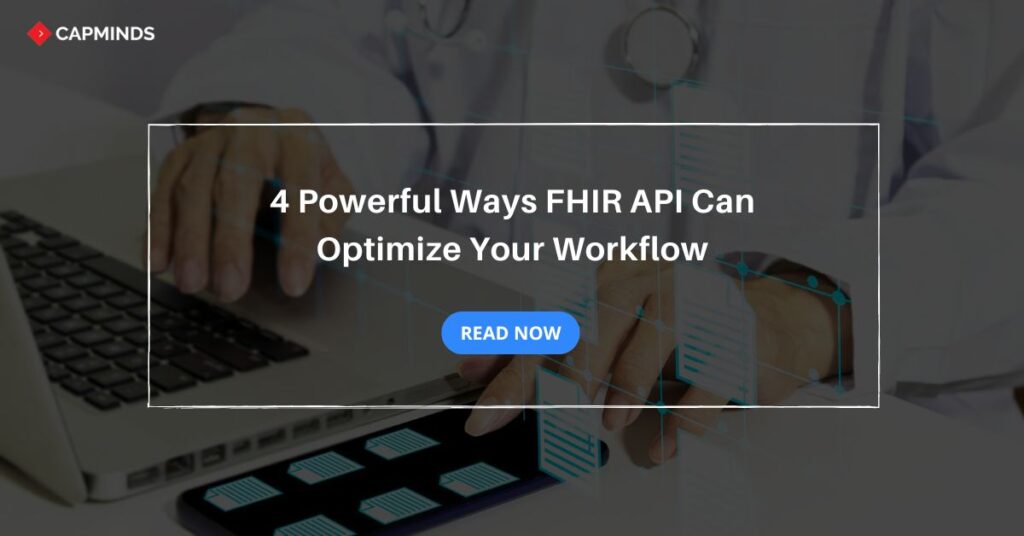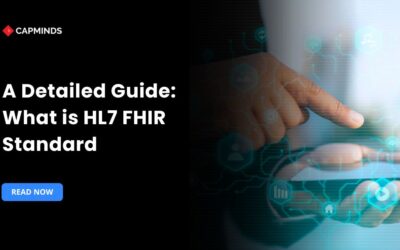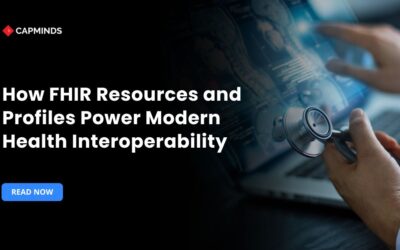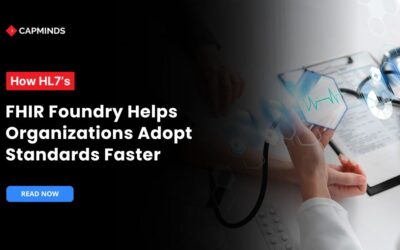4 Powerful Ways FHIR API Can Optimize Your Workflow
As healthcare continues to change towards digital transformation, FHIR has become the most important component for health interoperability and efficient data exchange.
FHIR APIs enable to connection of healthcare systems and allow for a seamless exchange of data. In this blog post, we have shared how FHIR API can optimize your workflow.
What is FHIR API?
FHIR is a global standard developed by HL7. It was primarily designed to exchange medical data between healthcare systems, increasing health interoperability and coordinating patient care.
This tool is easily interoperable with numerous healthcare systems, including electronic health records and lab information systems, hospital information systems, and radiology information systems.
According to a source, HL7 FHIR standards improve health interoperability and save up to $30 billion in national healthcare costs.
FHIR divides complicated healthcare data into separate “resources,” allowing developers to create apps that work easily with Electronic Health Records and other healthcare systems.
Importance of FHIR in Modern Healthcare Systems
The growing requirement for real-time, interoperable data interchange has made FHIR an essential component of healthcare. FHIR enables standardized communication across heterogeneous systems, which benefits healthcare providers:
- Provide improved patient care with a comprehensive view of medical records.
- Streamline procedures such as billing, appointments, and referrals.
- Comply with requirements such as HIPAA, GDPR, and CMS interoperability standards.
- FHIR enables healthcare organizations to embrace innovation, increase operational efficiency, and meet patients’ growing expectations for digital health solutions.
Related: How HL7 FHIR is Transforming Healthcare Interoperability: What You Need to Know
4 Ways FHIR API Transforms Your Workflow
1. FHIR Enhances Interoperability
Interoperability refers to the ability of healthcare systems to exchange and analyze data reliably. FHIR addresses one of healthcare’s most significant challenges: smoothly linking various systems and applications.
- FHIR improves interoperability by organizing healthcare data into conveniently available resources, including test results, prescriptions, and allergies.
- These resources are standardized, so systems may “speak the same language.”
Impact on Workflow:
- Providers can get real-time patient information without switching between systems.
- Reduces manual data entering errors.
- Improves the continuity of care by allowing providers to rapidly comprehend a patient’s medical history.
2. FHIR Simplifies Workflow Automation
Healthcare processes can include repeated procedures such as appointment scheduling, lab test requests, and follow-ups. FHIR introduces resources such as Task, Subscription, and OperationOutcome, which enable the automation of various procedures.
Key benefits include:
- Automated administrative procedures that save time for healthcare professionals.
- Enables event-driven workflows, such as informing patients when lab results are ready.
- Improves communication across departments, minimizing bottlenecks.
3. FHIR Drives Innovation and Scalability
FHIR’s modular nature enables healthcare organizations to evolve without replacing their present infrastructure. SMART on FHIR enables developers to construct plug-and-play programs that integrate smoothly with major EHR systems such as Epic, Cerner, and Allscripts.
- FHIR promotes innovation by enabling the development of patient-facing apps for telehealth, prescription reminders, and chronic disease management.
- Encourages competitiveness by offering public FHIR servers for testing and development.
Scalability Features:
- FHIR can be implemented incrementally, beginning with specific use cases and increasing as needed.
- Easily adjusts to changing regulations and healthcare trends.
4. FHIR Strengthens Security and Compliance
With healthcare data being so sensitive, security is critical. While FHIR does not mandate security protocols, it works flawlessly with industry standards to protect data.
Key Security Practices:
- OAuth 2.0 provides secure authorization.
- OpenID Connect enables safe user authentication.
- Encryption standards protect data both in transit and at rest.
Compliance with regulations: FHIR implementations can comply with regional privacy legislation, such as GDPR in Europe, HIPAA in the US, and comparable frameworks elsewhere.
Frameworks for security: SMART on FHIR offers a secure framework for designing interoperable apps that meet security criteria.
Related: How HL7 FHIR is Embracing Advanced PHI De-Identification Solutions
FHIR APIs are changing healthcare by simplifying data interchange between systems, automating procedures, fostering innovation, and ensuring data security.
CapMinds HL7 FHIR Service for Healthcare Practice
CapMinds offers the best all-in-one health interoperability solution for healthcare practices. Our HL7 FHIR service will understand your clinical needs and requirements to cater to our solution.
We have years of experience in this field faced many challenges and tackled them with ease. Why can CapMinds be your Go-to Interoperability Solution?
- We have experienced professionals with years of experience in the field.
- Our technical team is an expert who will analyze your healthcare practice thoroughly to tailor the Interoperability solution.
- We prioritize safety, security, encryption, and authentication to protect your healthcare practice patient’s data.
- Our comprehensive solution ensures seamless interoperability adhering to industry standards, and using standard protocols.
- We offer comprehensive training sessions to healthcare staff.
- Our affordable health interoperability solution benefits healthcare practice at all levels.
If you are searching for the best interoperability service for your practice, CapMinds is your choice. We can assist you by navigating all potential challenges and ensuring seamless health data exchange.
Reach out to CapMinds Health Data Exchange Solutions for your Healthcare Practice.




